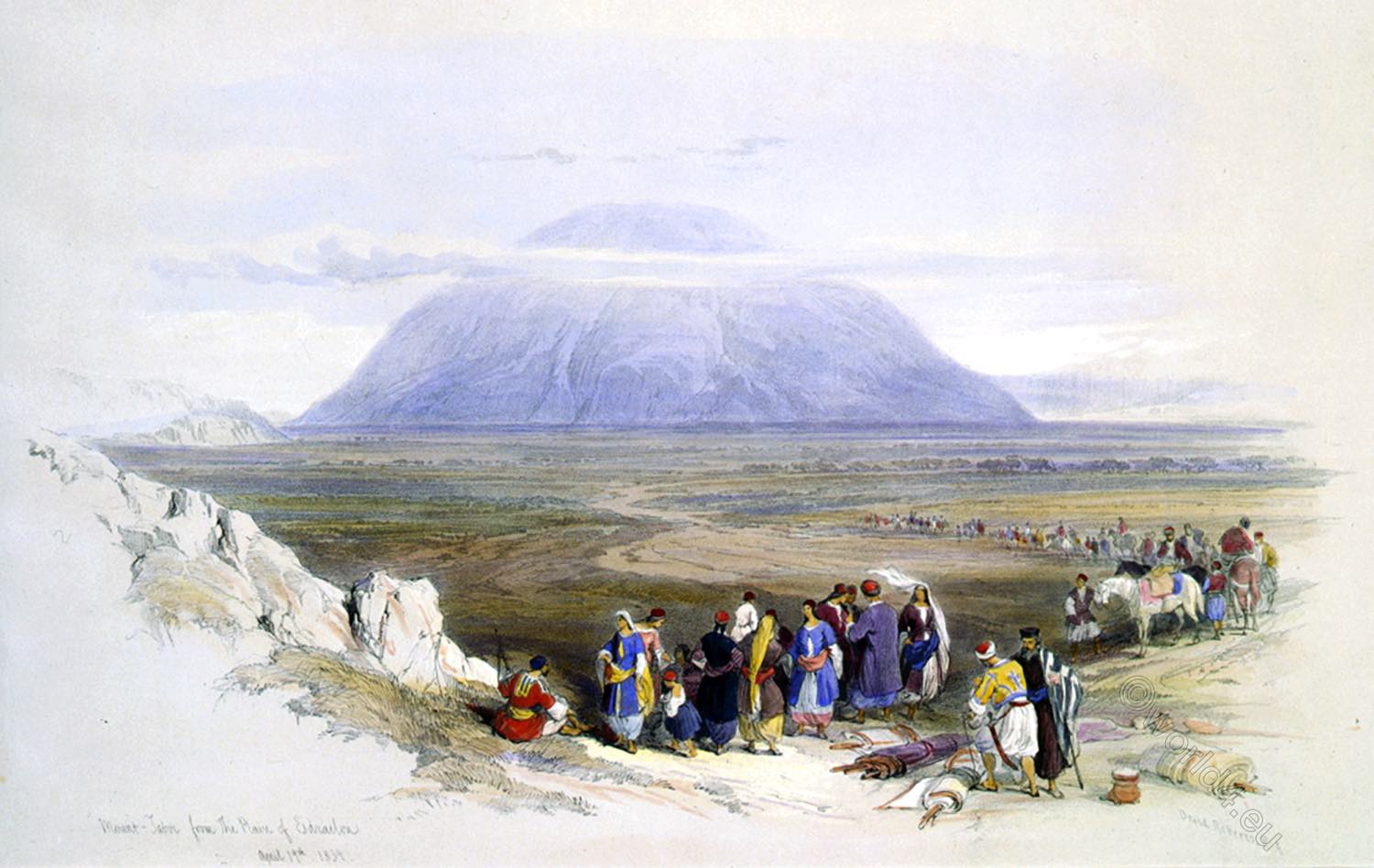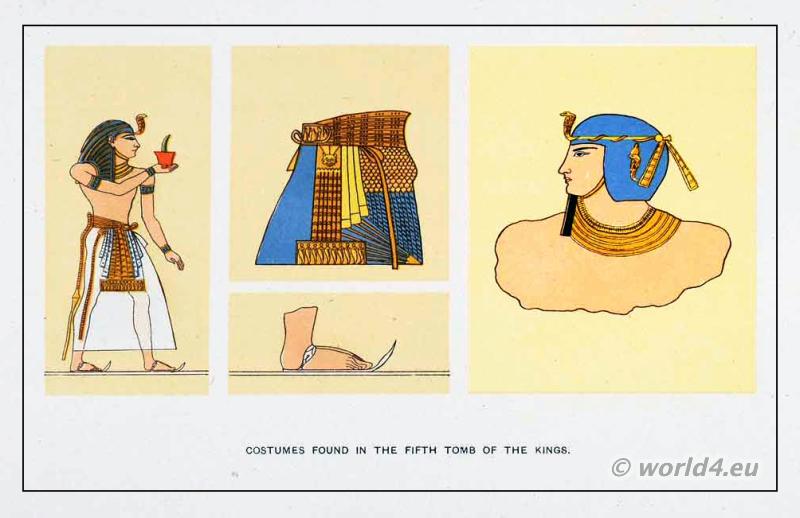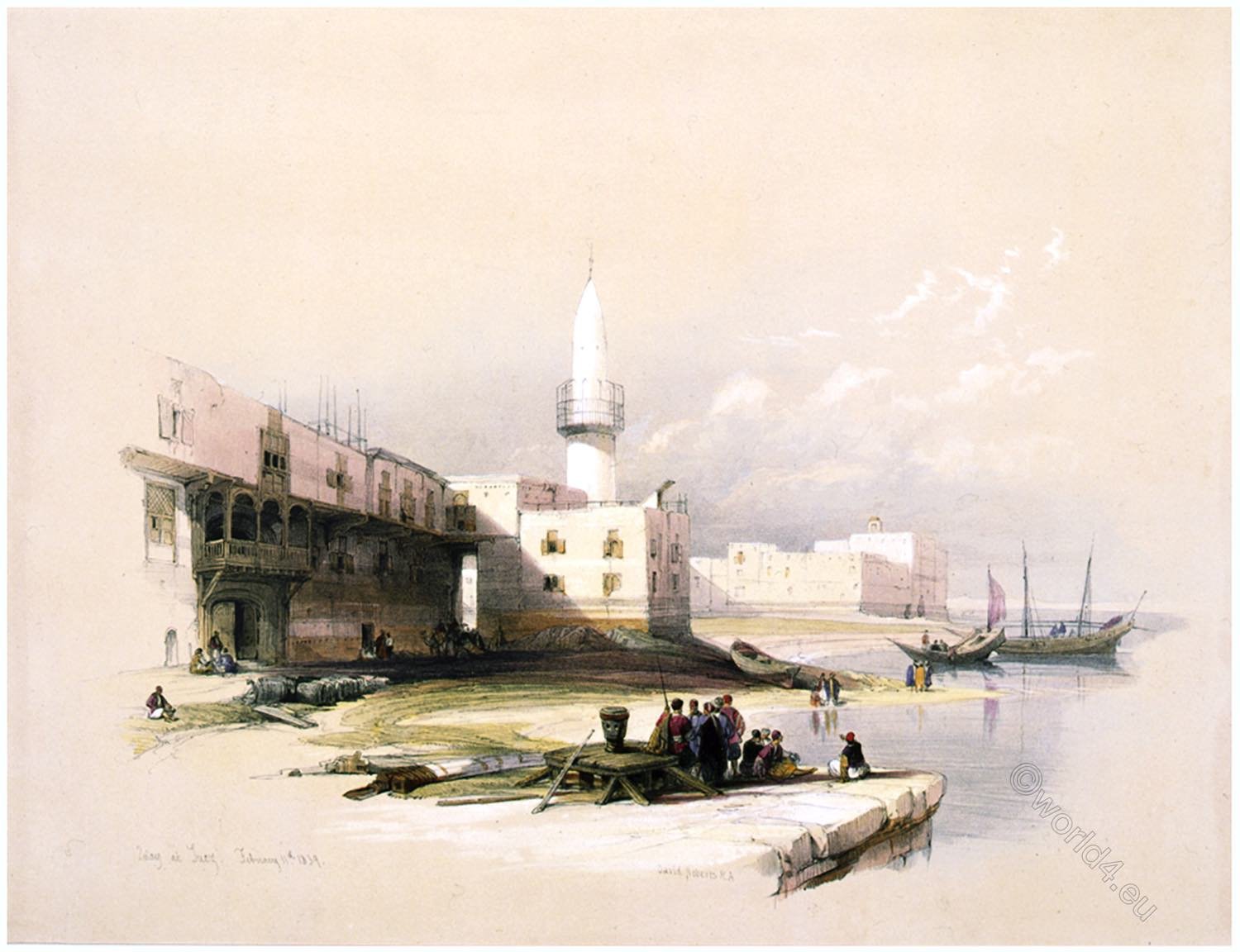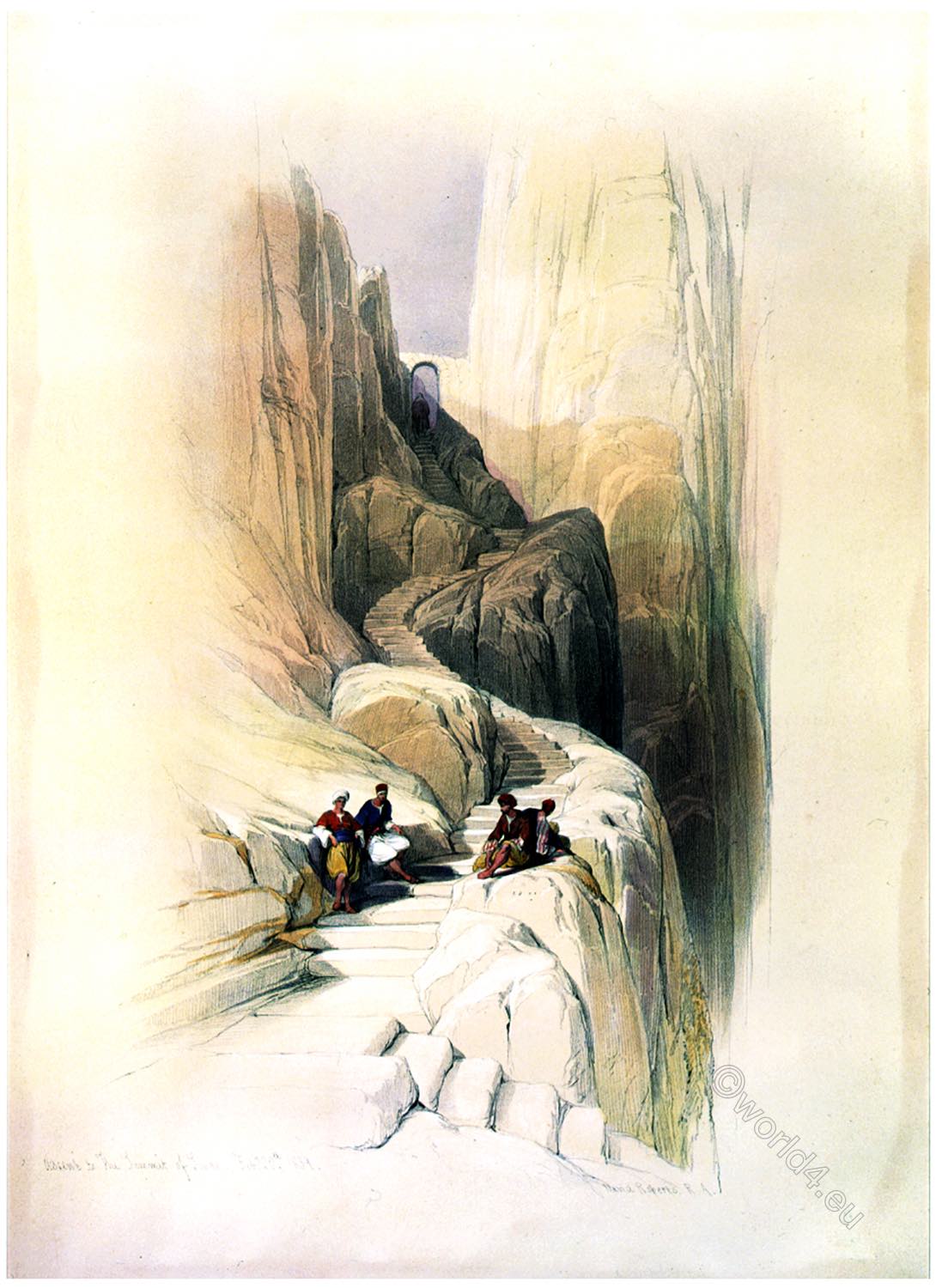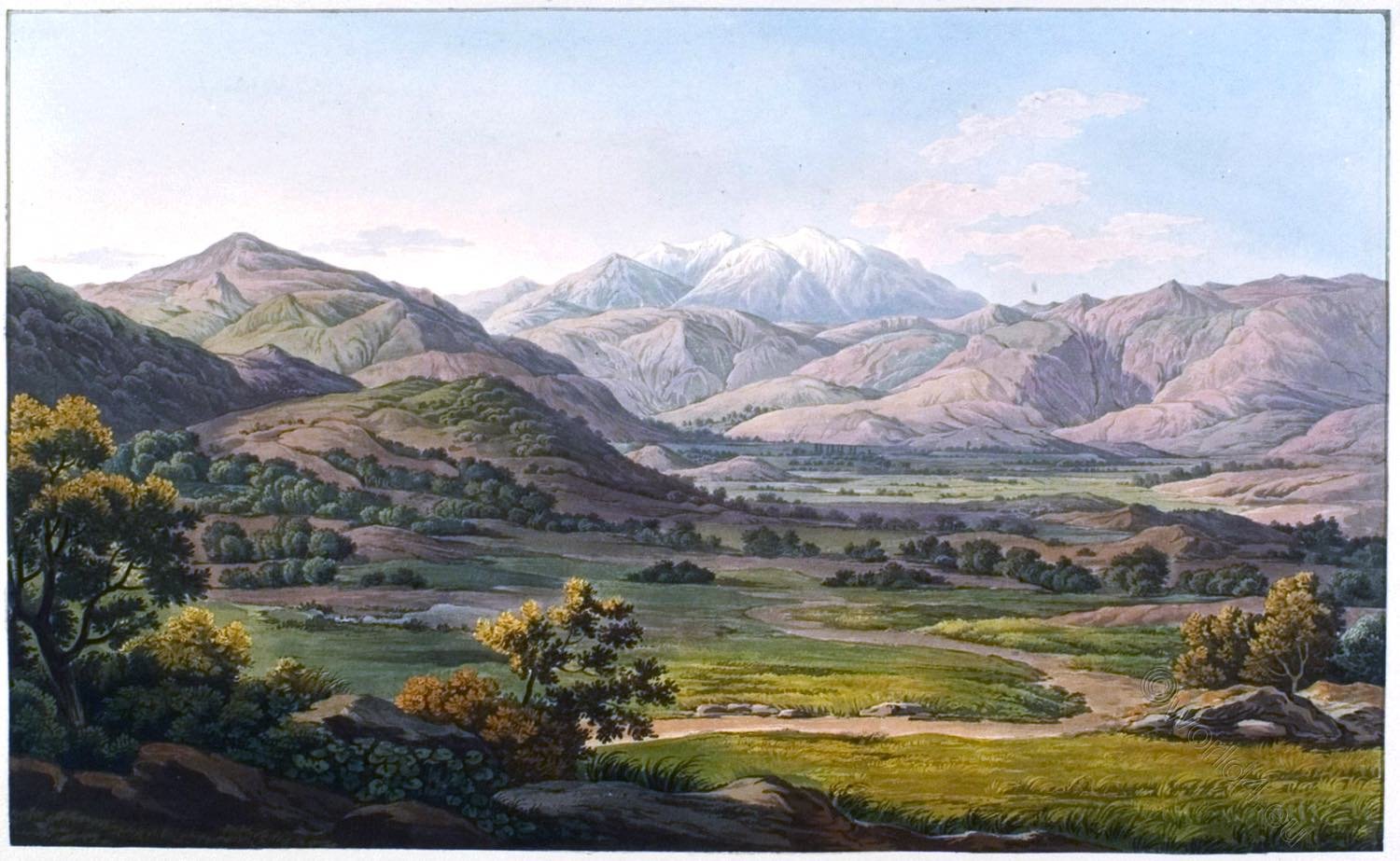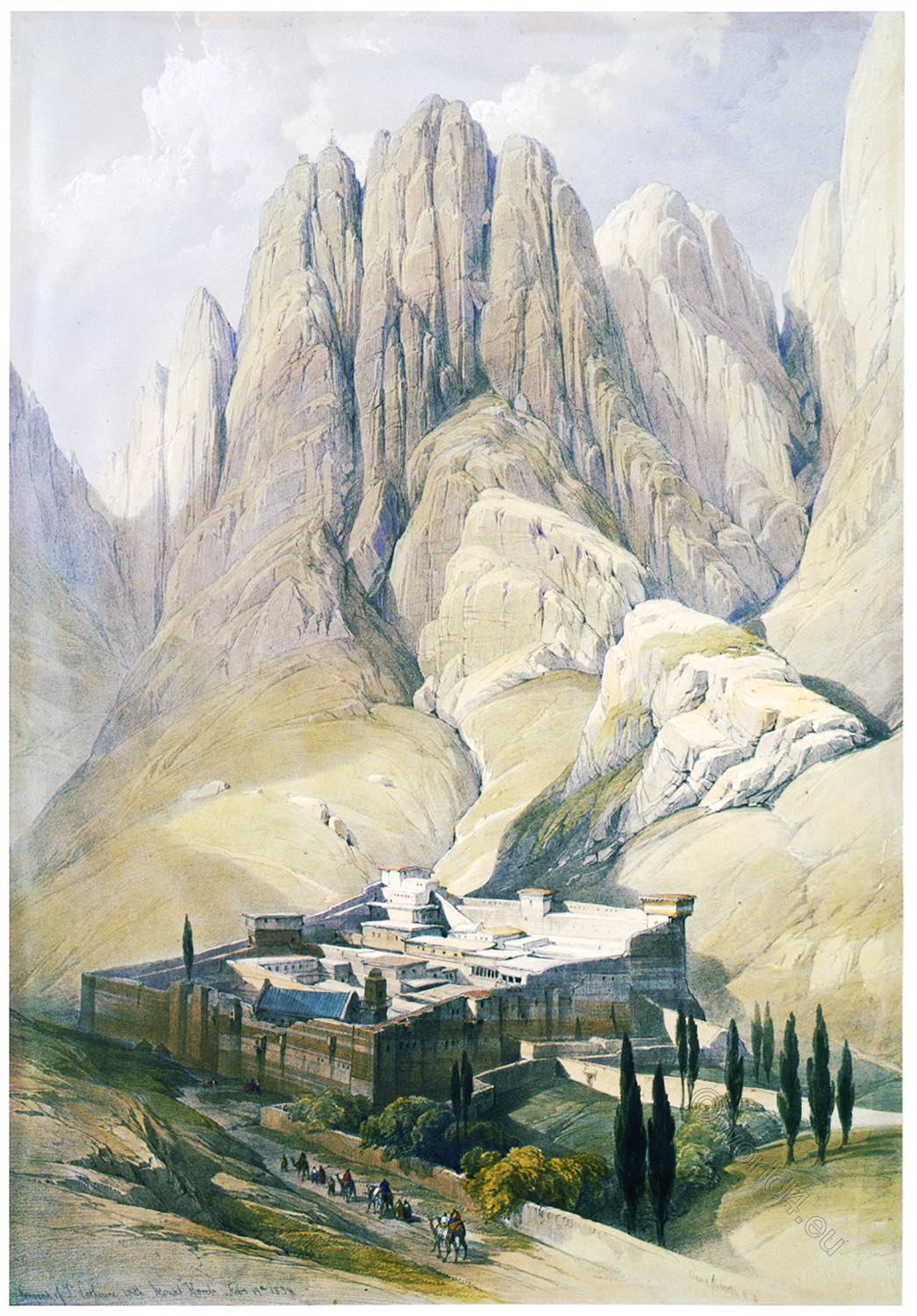
GENERAL VIEW OF THE CONVENT OF ST. CATHERINE
by David Roberts
The whole scene of the sojourning of the Israelites lies in a Peninsula, between the forks of the upper portion of the Red Sea. The Peninsula is of a triangular form, and from about half-way down to its point at the South is a mass of mountains, intersected with deep valleys, and exhibiting a few barren plains.
The geographical position of the Convent is in Lat. 28° and Long. 31° from Paris. The elevation above the sea is about 4966 Paris feet.
Allusion has been already made to the differences of learned opinion on the site of the Giving of the Law. It appears that Jebel-Musa (the Mount of Moses, Mount Sinai) exhibits no features corresponding to the Sacred History. Robinson, to whose judgment and diligence much respect is due, regards the Plain Er-Rahah, with the Mount now named Horeb immediately in its front, as the most probable locality. But he admits that he had not visited Jebel-Serbal (Mount Serba).
He also regards Horeb as anciently the name of the whole range, and Sinai as that of a particular pinnacle; arguing from the narrative, which, before and after the Giving of the Law, speaks only of Horeb; while during that great transaction Sinai (with one exception) alone is named. “As we advanced,” he says, “the dark and frowning front of Sinai itself (the present Horeb of the monks) began to appear.
It was a scene of solemn grandeur wholly unexpected, and such as we had never before seen; and the associations which at the moment rested upon our minds were almost overwhelming Still advancing, the front of Horeb rose like a wall before us, and one can approach quite to the foot, and touch the Mount.” 1)
He narrates a visit which he and his companion made to many of the peaks of Sinai but not satisfied that the view from those agreed with the Scripture account, they decided upon scaling the almost inaccessible peak of Es-Sufsafeh (Willow Peak or Ras es-Safsafeh), the pinnacle of Horeb above the Convent. “We first attempted,” he says, “to climb the side in a direct course, but found the rock so smooth and precipitous, that after some falls, we were obliged to give it up, and clamber upwards along a steep ravine by a more circuitous course. …
The extreme difficulty, and even danger of the ascent, was well rewarded by the prospect that opened before us. The whole plain Er-Rahah lay spread out beneath our feet, with the adjacent Wadys and Mountains; while Wady Esh-Sheikh on the right, and the recess on the left, both connected with and opening broadly from Er-Rahah, presented an area which seems nearly double that of the plain.
Our conviction was strengthened, that here, or on some one of the adjacent cliffs, was the spot where the Lord ‘descended in fire’ and proclaimed the Law. Here lay the plain where the whole congregation might be assembled; here was the mount that could be approached and ‘touched;’ and here the mountain-brow, where alone the lightnings and the thick cloud would be visible to the Camp, when the Lord ‘came down in the sight of all the people upon Mount Sinai.'” 2)
The primary purpose of the Law was to establish the morality of man kind. It was the first instance, from the days of Noah, in which peculiar sins were marked by Divine condemnation. The general impulse of natural justice had already prohibited crimes palpably injurious to society. But the Law not simply strengthened that original impulse, but gave it a new distinctness, a new force, and a new authority. It was revealed, as the Apostle declares, “on account of transgressions.”
And, as fear of punishment is the natural guard against the commission of crime, the “terrors of the Lord” were displayed to the eyes of the people. All, hitherto, had been preparative to Divine awe.
The miraculous passage of the Red Sea, the miraculous support in the Wilderness, the surrounding scene of utter desolation, the daily rescue from famine were all combined in creating a sense of total dependence. But the Giving of the Law presented a new character of JEHOVAH. The people had, till then, seen Him only as their Protector.
They were now to see Him as their Judge. Death was to be proclaimed against national and individual crime; and the wild hills, the continual thunders, the cloudy throne, and the angelic trumpet, were only accessories to that sacred terror, which was to be consummated by the voice of GOD Himself, pronouncing the principles of moral government for all the generations of man.
1) Biblical Researches,i. 130. 2) BiblicalResearches,i. 157.
Source: The Holy Land, Syria, Idumea, Arabia, Egypt, & Nubia, by David Roberts (British, 1796-1864), George Croly, William Brockedon. London: Lithographed, printed and published by Day & Son, lithographers to the Queen. Cate Street, Lincoln’s Inn Fields, 1855.
Continuing

